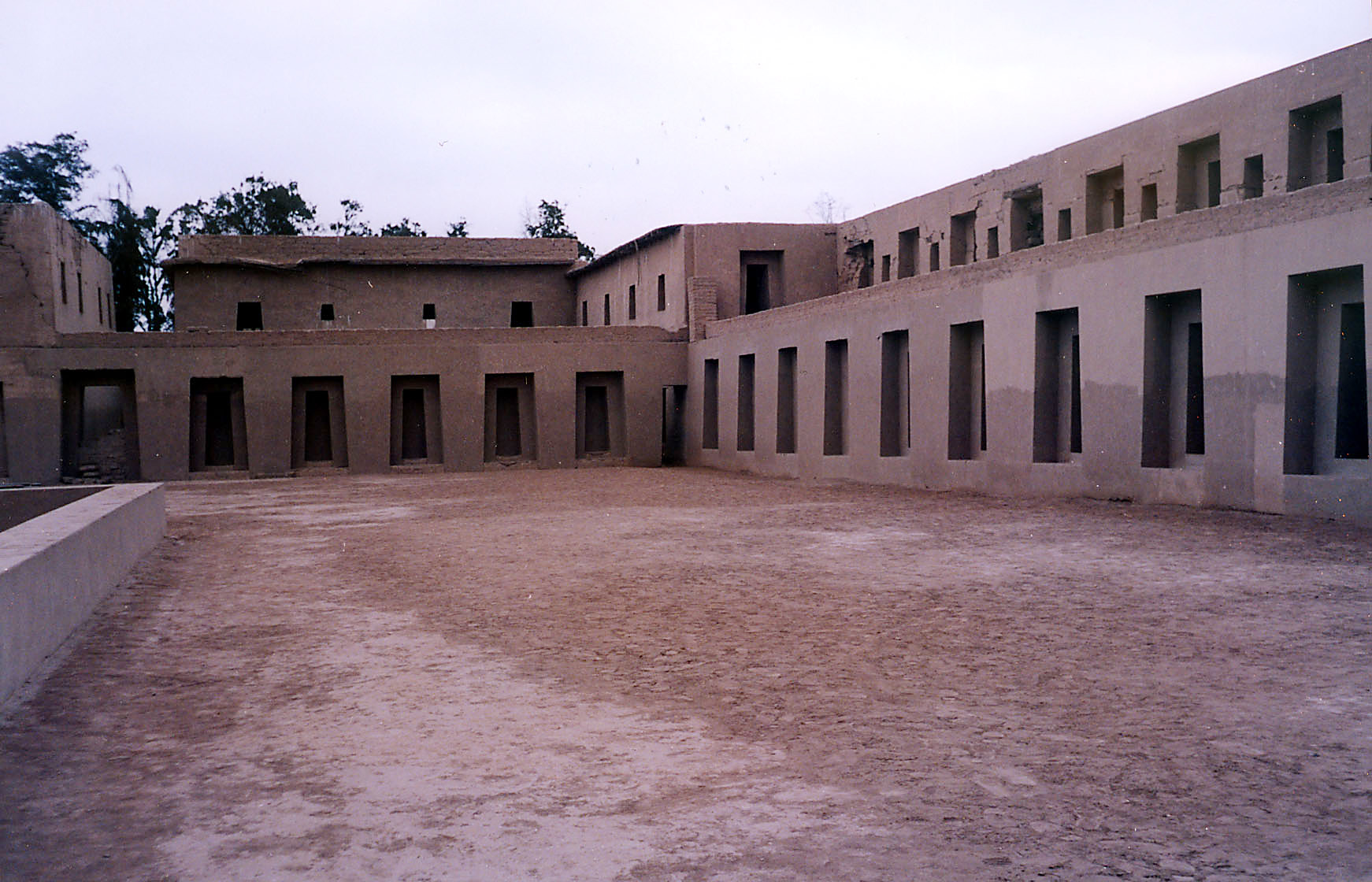|
Efraín Trelles
Efraín "Cholo" Trelles Aréstegui (28 May 1953 – 1 April 2018) was a Peruvian historian, writer, journalist and sports commentator for press, television and radio. Efraín Trelles was born in 1953, in Andahuaylas. Historian trained in colonial history, graduated by the Pontifical Catholic University of Peru, with a thesis that became the classic: ''Lucas Martínez Vegazo: operation of an initial Peruvian encomienda''. He was one of the pioneers in introducing the analysis of data and computer models in his study on the loyalties of the kuraka, kurakas in the Rebellion of Túpac Amaru II, which he published with Magnus Mörner in 1986. He then traveled to the University of Austin to do his doctorate studies. His foray into sports journalism began as a personal hobby. He worked as a columnist in several newspapers of the Peruvian capital as ''Expreso'' and ''La República (Peru), La República''. He worked as a journalist and historian in Radio Programas del Perú, RPP and ... [...More Info...] [...Related Items...] OR: [Wikipedia] [Google] [Baidu] |
Andahuaylas
Andahuaylas ( Quechua Antawaylla, ''anta'' copper, ''waylla'' meadow, "copper meadow"), founded in 1533 as San Pedro de Andahuaylas «La Grande de la Corona» (Spanish for "The Grand ityof the Crown"), is a Peruvian city. It is the capital of the Andahuaylas Province in the Apurímac Region. It is known as the ''pradera de los celajes'' (Spanish for "prairie of colored clouds"). Its approximate population of 42,268 inhabitants ( 2017 census) makes it the largest city in the region. Geography Andahuyalas is located in the western part of the Apurímac Region Apurímac is the name of: *Apurímac River, a river in the south-eastern parts of central Peru * Department of Apurímac, a region in the south-eastern parts of central Peru *Three albums by the German new-age band Cusco Cusco or Cuzco (; or .... The nearest city is Abancay. Climate Transportation Andahuaylas is served by its own airport, the Andahuaylas Airport. Gallery File:Andahuaylas Central Plaza.jpg, Cen ... [...More Info...] [...Related Items...] OR: [Wikipedia] [Google] [Baidu] |
1953 Births
Events January * January 6 – The Asian Socialist Conference opens in Rangoon, Burma. * January 12 – Estonian émigrés found a government-in-exile in Oslo. * January 14 ** Marshal Josip Broz Tito is chosen President of Yugoslavia. ** The CIA-sponsored Robertson Panel first meets to discuss the UFO phenomenon. * January 15 ** Georg Dertinger, foreign minister of East Germany, is arrested for spying. ** British security forces in West Germany arrest 7 members of the Naumann Circle, a clandestine Neo-Nazi organization. * January 19 – 71.1% of all television sets in the United States are tuned into '' I Love Lucy'', to watch Lucy give birth to Little Ricky, which is more people than those who tune into Dwight Eisenhower's inauguration the next day. This record is never broken. * January 24 ** Mau Mau Uprising: Rebels in Kenya kill the Ruck family (father, mother, and six-year-old son). ** Leader of East Germany Walter Ulbricht announces that ... [...More Info...] [...Related Items...] OR: [Wikipedia] [Google] [Baidu] |
People From Andahuaylas Province
The term "the people" refers to the public or common mass of people of a polity. As such it is a concept of human rights law, international law as well as constitutional law, particularly used for claims of popular sovereignty. In contrast, a people is any plurality of persons considered as a whole. Used in politics and law, the term "a people" refers to the collective or community of an ethnic group or nation. Concepts Legal Chapter One, Article One of the Charter of the United Nations states that "peoples" have the right to self-determination. Though the mere status as peoples and the right to self-determination, as for example in the case of Indigenous peoples (''peoples'', as in all groups of indigenous people, not merely all indigenous persons as in ''indigenous people''), does not automatically provide for independent sovereignty and therefore secession. Indeed, judge Ivor Jennings identified the inherent problems in the right of "peoples" to self-determination, as i ... [...More Info...] [...Related Items...] OR: [Wikipedia] [Google] [Baidu] |
21st-century Peruvian Historians
File:1st century collage.png, From top left, clockwise: Jesus is crucified by Roman authorities in Judaea (17th century painting). Four different men (Galba, Otho, Vitellius, and Vespasian) claim the title of Emperor within the span of a year; The Great Fire of Rome (18th-century painting) sees the destruction of two-thirds of the city, precipitating the empire's first persecution against Christians, who are blamed for the disaster; The Roman Colosseum is built and holds its inaugural games; Roman forces besiege Jerusalem during the First Jewish–Roman War (19th-century painting); The Trưng sisters lead a rebellion against the Chinese Han dynasty (anachronistic depiction); Boudica, queen of the British Iceni leads a rebellion against Rome (19th-century statue); Knife-shaped coin of the Xin dynasty., 335px rect 30 30 737 1077 Crucifixion of Jesus rect 767 30 1815 1077 Year of the Four Emperors rect 1846 30 3223 1077 Great Fire of Rome rect 30 1108 1106 2155 Boudican revolt ... [...More Info...] [...Related Items...] OR: [Wikipedia] [Google] [Baidu] |
Peruvian Sports Journalists
Peruvians (''/peruanas'') are the citizens of Peru. What is now Peru has been inhabited for several millennia by cultures such as the Caral before the Spanish conquest in the 16th century. Peruvian population decreased from an estimated 5–9 million in the 1520s to around 600,000 in 1620 mainly because of infectious diseases carried by the Spanish. Spaniards and Africans arrived in large numbers in 1532 under colonial rule, mixing widely with each other and with Native Peruvians. During the Republic, there has been a gradual immigration of European people (especially from Spain and Italy, and to a lesser extent from Germany, France, Croatia, and the British Isles). Chinese and Japanese arrived in large numbers at the end of the 19th century. With 31.2 million inhabitants according to the 2017 Census. Peru is the fourth most populous country in South America. Its demographic growth rate declined from 2.6% to 1.6% between 1950 and 2000, and its population is expected to reach ... [...More Info...] [...Related Items...] OR: [Wikipedia] [Google] [Baidu] |
Pontifical Catholic University Of Peru Alumni
A pontifical () is a Christian liturgical book containing the liturgies that only a bishop may perform. Among the liturgies are those of the ordinal for the ordination and consecration of deacons, priests, and bishops to Holy Orders. While the ''Roman Pontifical'' and closely related '' Ceremonial of Bishops'' of the Roman Rite are the most common, pontificals exist in other liturgical traditions. History Pontificals in Latin Christianity first developed from sacramentaries by the 8th century. Besides containing the texts of exclusively episcopal liturgies such as the Pontifical High Mass, liturgies that other clergymen could celebrate were also present. The contents varied throughout the Middle Ages, but eventually a pontifical only contained those liturgies a bishop could perform. The ''Pontificale Egberti'', a pontifical that once belonged to and was perhaps authored by Ecgbert of York, is regarded as one of the most notable early pontificals and may be the oldest to survi ... [...More Info...] [...Related Items...] OR: [Wikipedia] [Google] [Baidu] |
2018 Deaths
This is a list of lists of deaths of notable people, organized by year. New deaths articles are added to their respective month (e.g., Deaths in ) and then linked below. 2025 2024 2023 2022 2021 2020 2019 2018 2017 2016 2015 2014 2013 2012 2011 2010 2009 2008 2007 2006 2005 2004 2003 2002 2001 2000 1999 1998 1997 1996 1995 1994 1993 1992 1991 1990 1989 1988 1987 1986 Earlier years ''Deaths in years earlier than this can usually be found in the main articles of the years.'' See also * Lists of deaths by day * Deaths by year (category) {{DEFAULTSORT:deaths by year ... [...More Info...] [...Related Items...] OR: [Wikipedia] [Google] [Baidu] |
Radio Nacional Del Perú
Radio Nacional del Perú is the first and the oldest radio station in Peru. It had its origins in the private station Lima OAX-AM, owned by the Peruvian Broadcasting Company, which was founded in 1924 by César A. Coloma, Santiago Acuña among others, and started broadcasting on June 20, 1925 after five days of test broadcasts that had started on June 15. Background The OAX official performance was linked to the sale of "''Marconi''" brand radio receptors. From 9:00 to 11:00, it broadcast non-professionally formatted programs including readings, opera arias and classical music recitals, all of them performed by amateurs. ''OAX'' was officially launched by president Augusto B. Leguía on June 20, 1925. Radio programs were still something new in Lima, but they could not compete with the then live night shows. Therefore, OAX soon declared bankruptcy and, by government resolution of September 6, 1926, the Peruvian State took over under the administration of Joaquín de Azambu ... [...More Info...] [...Related Items...] OR: [Wikipedia] [Google] [Baidu] |
Lima
Lima ( ; ), founded in 1535 as the Ciudad de los Reyes (, Spanish for "City of Biblical Magi, Kings"), is the capital and largest city of Peru. It is located in the valleys of the Chillón River, Chillón, Rímac River, Rímac and Lurín Rivers, in the desert zone of the central coastal part of the country, overlooking the Pacific Ocean. The city is considered the political, cultural, financial and commercial center of Peru. Due to its geostrategic importance, the Globalization and World Cities Research Network has categorized it as a "beta" tier city. Jurisdictionally, the metropolis extends mainly within the province of Lima and in a smaller portion, to the west, within the Constitutional Province of Callao, where the seaport and the Jorge Chávez Airport are located. Both provinces have regional autonomy since 2002. The 2023 census projection indicates that the city of Lima has an estimated population of 10,092,000 inhabitants, making it the List of cities in the Americas b ... [...More Info...] [...Related Items...] OR: [Wikipedia] [Google] [Baidu] |
Latina Televisión
Latina Televisión (also known as Latina TV or simply Latina, and previously known as Frecuencia Latina Televisión or Frecuencia Latina) is a Peruvian free-to-air television channel that has been broadcasting since 1983. It is the third private channel to start broadcasting. In 2005, it was the fourth most-watched channel according to CPI, and in 2008, it reached the third position according to Kantar Ibope Media. Its broadcast headquarters are located on Av. San Felipe in the Jesús María District, Lima, Jesús María District of Lima. The channel is owned by Grupo Enfoca. History In 1982, Compañía Latinoamericana de Radiodifusión S.A. was formed by Bernardo Batievsky (advertiser and filmmaker), Samuel and Mendel Winter (owners of the chocolate company Procacao S.A), and Baruch Ivcher (owner of the mattress company Paraíso del Perú S.A). They reacquired the license previously revoked from Tele 2. After conducting test broadcasts for four hours a day,'''' the channel was r ... [...More Info...] [...Related Items...] OR: [Wikipedia] [Google] [Baidu] |




